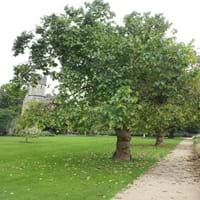Life Span
Perennial
Perennial
Type
Bulb or Corm or Tuber
Tree
Origin
South America
Southern Asia, Western Asia
Types
Pamianthe cardenasii , Pamianthe parviflora , Pamianthe peruviana
White mulberry, Chinese mulberry, Red mulberry
Habitat
All sorts of environments
Dappled Shade, Sunny Edge, Woodland Garden Canopy
USDA Hardiness Zone
8-10
5-9
Sunset Zone
21,22
H1, H2, 4, 5, 6, 7, 8, 9, 10, 11, 12, 13, 14, 15, 16, 17, 18, 19, 20, 21, 22, 23, 24
Habit
Clump-Forming
Oval or Rounded
Minimum Height
Not Available
Minimum Width
Not Available
Flower Color
White
White, Gray Green
Flower Color Modifier
Bicolor
Bicolor
Leaf Color in Spring
Dark Green
Green
Leaf Color in Summer
Light Green
Green
Leaf Color in Fall
Several shades of Green
Yellow
Leaf Color in Winter
Light Green
Not Available
Leaf Shape
Strap shaped
Heart-shaped
Plant Season
Spring, Summer, Fall
Summer, Fall
Sunlight
Partial Sun, Partial shade
Full Sun, Partial Sun
Type of Soil
Loam, Sand
Clay, Loam, Sand
The pH of Soil
Acidic, Neutral, Alkaline
Acidic, Neutral, Alkaline
Soil Drainage
Average
Average
Bloom Time
Spring, Late Spring, Early Summer, Summer, Late Summer
Late Spring
Tolerances
Drought
Drought
Where to Plant?
Ground, Pot
Ground
How to Plant?
Offsets
Seedlings, Stem Cutting
Plant Maintenance
Medium
Medium
Watering Requirements
Keep the ground moist but not water-logged
Requires regular watering, Water daily during growing season, Water Deeply
In Summer
Lots of watering
Lots of watering
In Spring
Moderate
Moderate
In Winter
Average Water
Average Water
Soil pH
Acidic, Neutral, Alkaline
Acidic, Neutral, Alkaline
Soil Type
Loam, Sand
Clay, Loam, Sand
Soil Drainage Capacity
Average
Average
Sun Exposure
Partial Sun, Partial shade
Full Sun, Partial Sun
Pruning
Pinch or prune as they grow to promote branching and bushiness, Remove damaged leaves, Remove dead branches, Remove dead leaves, Requires little pruning
Prune when plant is dormant, Remove damaged leaves, Remove dead branches, Remove dead leaves, Remove dead or diseased plant parts, Remove deadheads
Fertilizers
All-Purpose Liquid Fertilizer, High phosphorus
Apply 10-10-10 amount
Pests and Diseases
Leaf spot, Mosaic viruses
Red blotch
Plant Tolerance
Drought
Drought
Flowers
Showy
Insignificant
Flower Petal Number
Single
Single
Foliage Texture
Coarse
Coarse
Foliage Sheen
Glossy
Matte
Attracts
Bees, Birds, Bumblebees, Butterflies, Hummingbirds, pollinators
Birds
Aesthetic Uses
Beautification, Bouquets, Ornamental use, Showy Purposes
Not Used For Aesthetic Purpose
Beauty Benefits
No Beauty Benefits
Anti-ageing, Good for skin and hair, Promotes Healthy Hair
Environmental Uses
Air purification
Air purification, Food for animals, Food for birds, Shadow Tree, Shelter for wildlife, Wildlife, Windbreak
Medicinal Uses
No Medicinal Use
Anthelmintic, Astringent, Homeopathy, Hypoglycaemic, Laxative, Odontalgic, Purgative
Part of Plant Used
Not Available
Bark, Fruits, Stem, Wood
Other Uses
Beneficial species for attracting pollinators, Decoration Purposes
Fibre, Used as a dye, Used for its medicinal properties, Wood is used for making furniture
Used As Indoor Plant
No
No
Used As Outdoor Plant
Yes
Yes
Garden Design
Bog Garden, Container, Feature Plant, Foundation, Mixed Border, Water Gardens
Edible, Feature Plant, Fruit / Fruit Tree, Shade Trees
Botanical Name
HYMENOCALLIS longipetala
MORUS nigra
Common Name
Peruvian Daffodil, Spiderlily
Black Mulberry
In Hindi
peruvian daffodil
काले शहतूत के पेड़
In German
peruvian daffodil
Schwarze Maulbeerbaum
In French
peruvian daffodil
Noir Mulberry Tree
In Spanish
Pamianthe
Negro árbol de mora
In Greek
peruvian daffodil
Μαύρο Mulberry Tree
In Portuguese
peruvian daffodil
Árvore de Mulberry Preto
In Polish
peruvian daffodil
Czarny Mulberry Tree
In Latin
peruvian daffodil
Niger arbori moro:
Phylum
Magnoliophyta
Magnoliophyta
Class
Liliopsida
Magnoliopsida
Order
Asparagales
Urticales
Family
Amaryllidaceae
Moraceae
Clade
Angiosperms, Monocots
Angiosperms, Eudicots, Rosids
Subfamily
Amaryllidoideae
Not Available
Number of Species
Not Available
Season and Care of Peruvian Daffodil and Black Mulberry
Season and care of Peruvian Daffodil and Black Mulberry is important to know. While considering everything about Peruvian Daffodil and Black Mulberry Care, growing season is an essential factor. Peruvian Daffodil season is Spring, Summer and Fall and Black Mulberry season is Spring, Summer and Fall. The type of soil for Peruvian Daffodil is Loam, Sand and for Black Mulberry is Clay, Loam, Sand while the PH of soil for Peruvian Daffodil is Acidic, Neutral, Alkaline and for Black Mulberry is Acidic, Neutral, Alkaline.
Peruvian Daffodil and Black Mulberry Physical Information
Peruvian Daffodil and Black Mulberry physical information is very important for comparison. Peruvian Daffodil height is 61.00 cm and width 61.00 cm whereas Black Mulberry height is Not Available and width Not Available. The color specification of Peruvian Daffodil and Black Mulberry are as follows:
Peruvian Daffodil flower color: White
Peruvian Daffodil leaf color: Dark Green
Black Mulberry flower color: White and Gray Green
- Black Mulberry leaf color: Green
Care of Peruvian Daffodil and Black Mulberry
Care of Peruvian Daffodil and Black Mulberry include pruning, fertilizers, watering etc. Peruvian Daffodil pruning is done Pinch or prune as they grow to promote branching and bushiness, Remove damaged leaves, Remove dead branches, Remove dead leaves and Requires little pruning and Black Mulberry pruning is done Prune when plant is dormant, Remove damaged leaves, Remove dead branches, Remove dead leaves, Remove dead or diseased plant parts and Remove deadheads. In summer Peruvian Daffodil needs Lots of watering and in winter, it needs Average Water. Whereas, in summer Black Mulberry needs Lots of watering and in winter, it needs Average Water.





